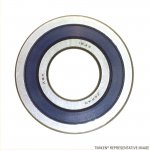TDStuart
New member
I figured I would start off the forum by asking what should newbies know? Mostly referring to people who have limited car and electrical knowledge.
I know that much of the electric turbo space is mostly untouched and requires everything to be done by hand, but I thought it would be nice to get some knowledge as a starting point so others (and me) can see how much work and how much money would go into a project like this!
I know the very basic concept, attach a high-power electric motor to a turbo. Give it some power and hook it up to your intake.
For example:
What kind of turbo/centrifugal supercharger should we use?
What rpm does the electrical motor need to spin at to get any results?
What torque is recommended for the electric motor to produce?
Is there any way to use an alternator or upgraded alternator to power the electric turbo?
What batteries should we be looking out for and is there any you can recommend?
What motors can you recommend?
Would a leaf blower do anything (dead serious, always wondered if you got a good enough lead blower if it would actually help your car get more air)?
If I think of more questions ill ask. Sorry if some of these questions have already been answered on the yt channel but I thought it would be nice to put all the newbie information in one place!
I know that much of the electric turbo space is mostly untouched and requires everything to be done by hand, but I thought it would be nice to get some knowledge as a starting point so others (and me) can see how much work and how much money would go into a project like this!
I know the very basic concept, attach a high-power electric motor to a turbo. Give it some power and hook it up to your intake.
For example:
What kind of turbo/centrifugal supercharger should we use?
What rpm does the electrical motor need to spin at to get any results?
What torque is recommended for the electric motor to produce?
Is there any way to use an alternator or upgraded alternator to power the electric turbo?
What batteries should we be looking out for and is there any you can recommend?
What motors can you recommend?
Would a leaf blower do anything (dead serious, always wondered if you got a good enough lead blower if it would actually help your car get more air)?
If I think of more questions ill ask. Sorry if some of these questions have already been answered on the yt channel but I thought it would be nice to put all the newbie information in one place!



